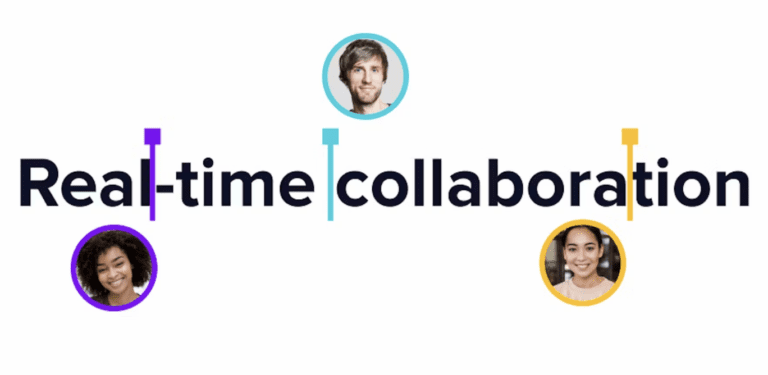
As a tech enthusiast and an education expert, I’m thrilled to guide you through the labyrinth of real-time collaboration tools for blended learning, with a special focus on cost analysis and tips for classrooms catering to Autism Spectrum Disorders (ASD). In an ever-changing educational landscape, being equipped with the right tools can make all the difference, especially for our remarkable learners on the autism spectrum.
The Magic of Real-time Collaboration in Blended Learning
Blended learning is like a beautifully orchestrated symphony, merging the best of online and face-to-face education. But, the conductor behind this symphony is real-time collaboration. I’ve experienced the transformative power of tools like O-Connect, Microsoft Teams, Zoom, and Google Classroom firsthand in my teaching journey.
These platforms bring classrooms alive with shared whiteboards, breakout rooms, and live polls. But the real game-changer is their seamless integration with other digital tools, opening up a world of possibilities for interactive learning experiences. Imagine having a math class where students collaboratively solve problems on a shared whiteboard, or an art session where they co-create masterpieces in real-time. It’s just magical!
The Dollars and Cents: Cost Analysis of Real-time Collaboration Tools
As with any technology, cost plays a crucial role when choosing real-time collaboration tools. Let’s take a peek into the cost structure of the top players in the market.
Zoom has a free tier but it limits group meetings to 40 minutes. Their paid plans, which offer more features, start at $14.99 per month per host.
Google Classroom, part of Google Workspace for Education, is free for schools and offers impressive features. But for advanced security and analytics, Google offers a paid version, Google Workspace for Education Plus, at $5 per student per year.
Microsoft Teams is part of the Microsoft 365 suite and its basic version is free for schools. Paid plans, with more storage and security features, start at $5 per user per month.
Always remember, the true cost of these platforms isn’t just in their price tags but in their fit for your needs, ease of use, and their ability to deliver an enriching learning experience.
Real-time Collaboration Tools for ASD Classrooms: A Few Handy Tips
In my journey as an educator, I’ve realized the immense potential of real-time collaboration tools for supporting students with Autism Spectrum Disorders. Here are some tips that I’ve found helpful:
- Personalized Learning: Utilize the breakout room feature of platforms like Zoom to offer individualized instruction. This can create a less overwhelming learning environment for students with ASD.
- Visual Aids: Tools like the digital whiteboard can be invaluable for visual learners. Remember, a picture is worth a thousand words!
- Interactive Learning: Use real-time quizzes and polls to make learning interactive and fun. My students on the autism spectrum love these!
- Familiarity and Routine: Keep changes to a minimum. Use the same platform and stick to a routine to create a comfortable learning environment.
In the grand scheme of things, real-time collaboration tools are the superheroes of blended learning. While the cost aspect is significant, remember that these tools are investments towards a more inclusive and engaging learning environment. Especially for our extraordinary students on the autism spectrum, these tools are not just platforms, but gateways to a world of learning opportunities. So, let’s embrace these tools, and together, let’s create a truly inclusive digital classroom.
Do you think the benefits of real-time collaboration tools justify their costs? And do you have any special tips for using these tools in an ASD classroom? I would love to hear your thoughts!

